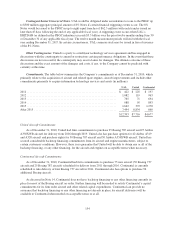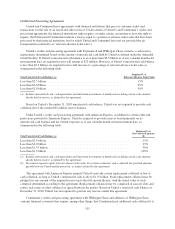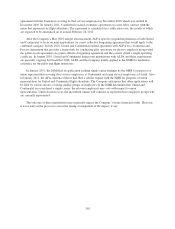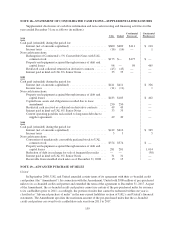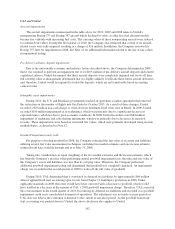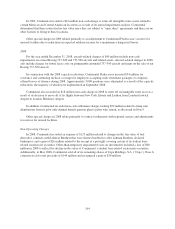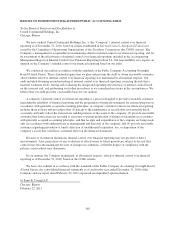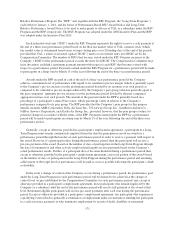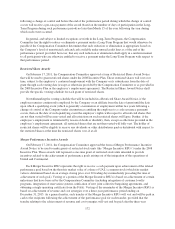United Airlines 2010 Annual Report Download - page 164
Download and view the complete annual report
Please find page 164 of the 2010 United Airlines annual report below. You can navigate through the pages in the report by either clicking on the pages listed below, or by using the keyword search tool below to find specific information within the annual report.UAL and United
Aircraft impairments
The aircraft impairments summarized in the table above for 2010, 2009 and 2008 relate to United’s
nonoperating Boeing 737 and Boeing 747 aircraft which declined in value, as older less fuel efficient models
became less valuable with increasing fuel costs. The carrying values of these nonoperating aircraft were reduced
to estimated fair values. During the first quarter of 2010, the Company also estimated that certain of its aircraft-
related assets were fully impaired resulting in a charge of $16 million. In addition, the Company reviewed its
Boeing 737 fleet for impairment in 2008. See Note 12 for additional information related to the use of fair values
in impairment testing.
Pre-delivery advance deposit impairment
Due to the unfavorable economic and industry factors described above, the Company determined in 2008
that it was required to perform an impairment test of its $105 million of pre-delivery aircraft deposits and related
capitalized interest. United determined that these aircraft deposits were completely impaired and wrote off their
full carrying value as management determined that it is highly unlikely it will take these future aircraft deliveries
and, therefore, United would be required to forfeit the deposits, which are not transferable based on existing
contract terms.
Intangible asset impairments
During 2010, the U.S. and Brazilian governments reached an open skies aviation agreement that removed
the restriction on the number of flights into Sao Paulo by October 2015. As a result of these changes, United
recorded a $29 million non-cash charge to write-down its indefinite-lived route asset in Brazil. In 2009, United
recorded $150 million impairment of its tradenames, which was primarily due to a significant decrease in
expected future cash flows due to poor economic conditions. In 2008, United recorded a total $64 million
impairment of tradename and code sharing agreements, which was primarily due to decreases in expected
revenue. These impairments were based on estimated fair values, which were primarily developed using income
methodologies, as described in Note 12.
Goodwill impairment and credit
For purposes of testing goodwill in 2008, the Company estimated the fair value of its assets and liabilities
utilizing several fair value measurement techniques, including two market estimates and one income estimate,
using relevant data available through and as of May 31, 2008.
Taking into consideration an equal weighting of the two market estimates and the income estimate, which
has been the Company’s practice when performing annual goodwill impairment tests, the indicated fair value of
the Company’s assets and liabilities was less than its carrying value. Therefore, the Company performed
additional goodwill impairment testing and determined that goodwill was completely impaired. An impairment
charge was recorded in the second quarter of 2008 to write-off the full value of goodwill.
During 2010, UAL determined that it overstated its deferred tax liabilities by approximately $64 million
when it applied fresh start accounting upon its exit from Chapter 11 bankruptcy protection in 2006. Under
applicable standards in 2008, this error would have been corrected with a decrease to goodwill, which would
have resulted in a decrease in the amount of UAL’s 2008 goodwill impairment charge. Therefore, UAL corrected
this overstatement in the fourth quarter of 2010 by reducing its deferred tax liabilities and recorded it as goodwill
impairment credit in its consolidated statement of operations. The adjustment was not made to prior periods as
UAL does not believe the correction is material to the current or any prior period. As the goodwill from fresh
start accounting was pushed down to United, the above disclosure also applies to United.
162




